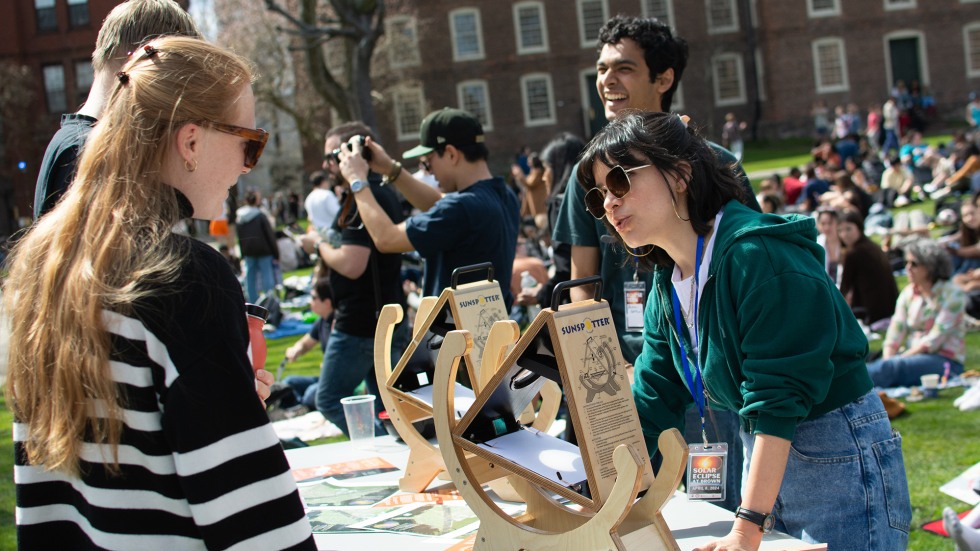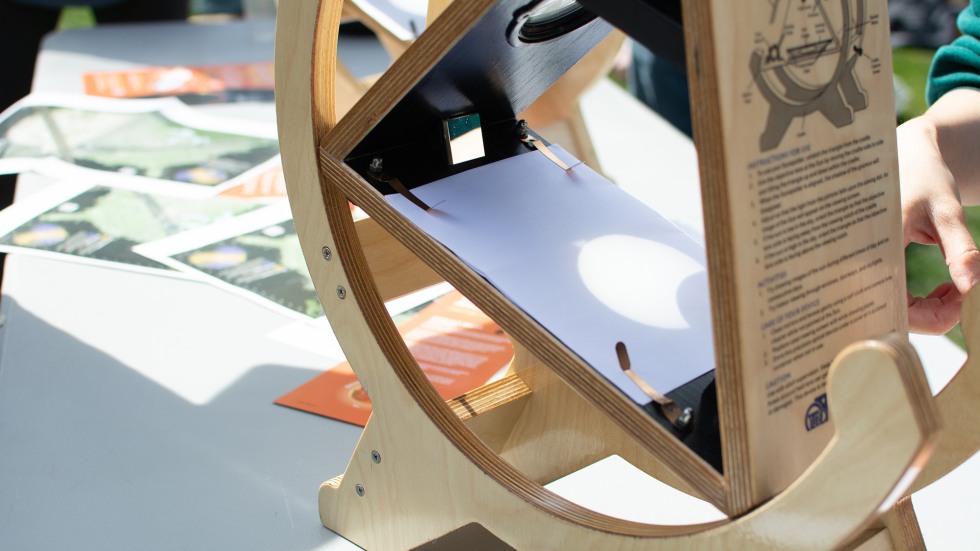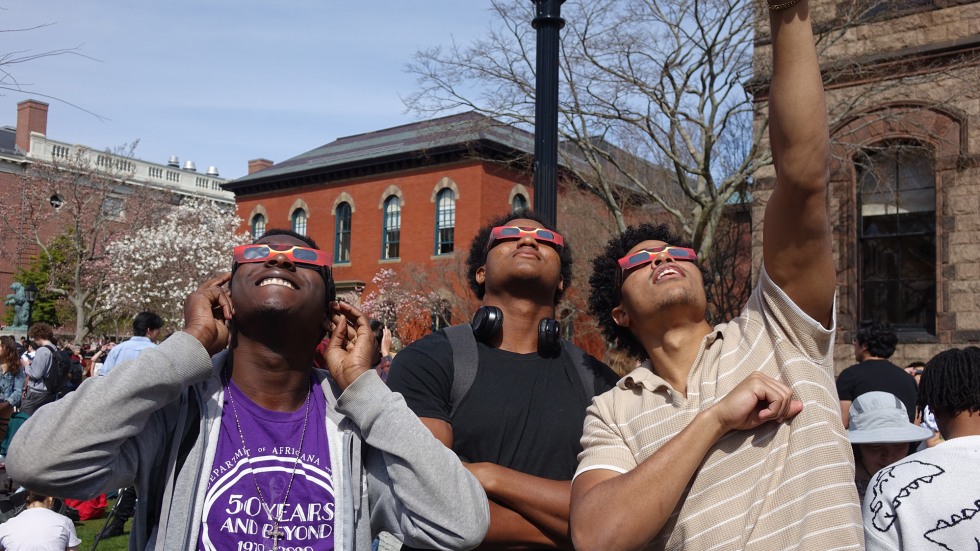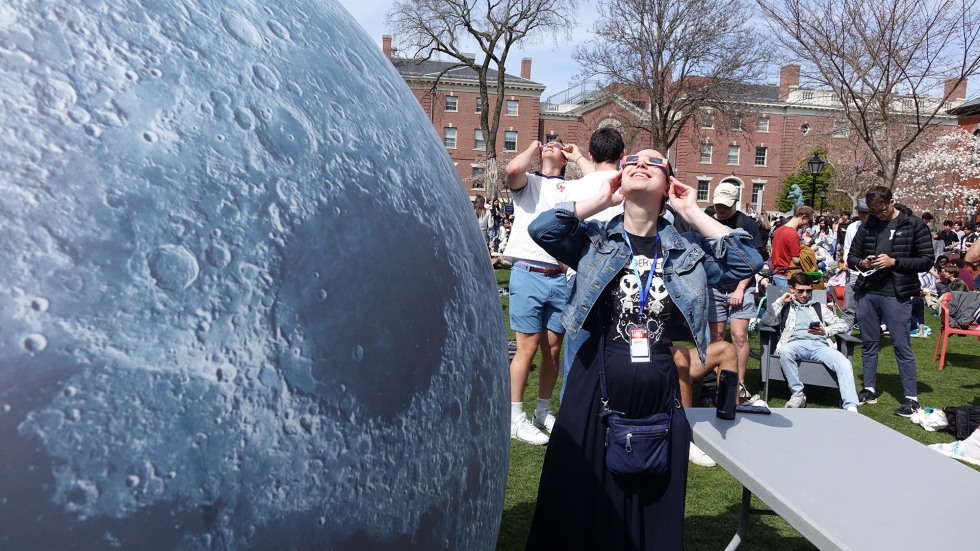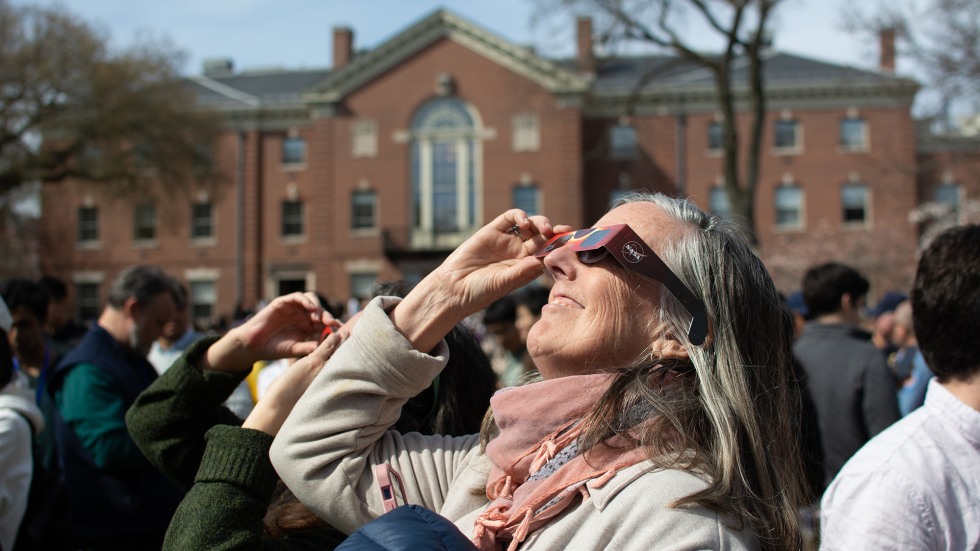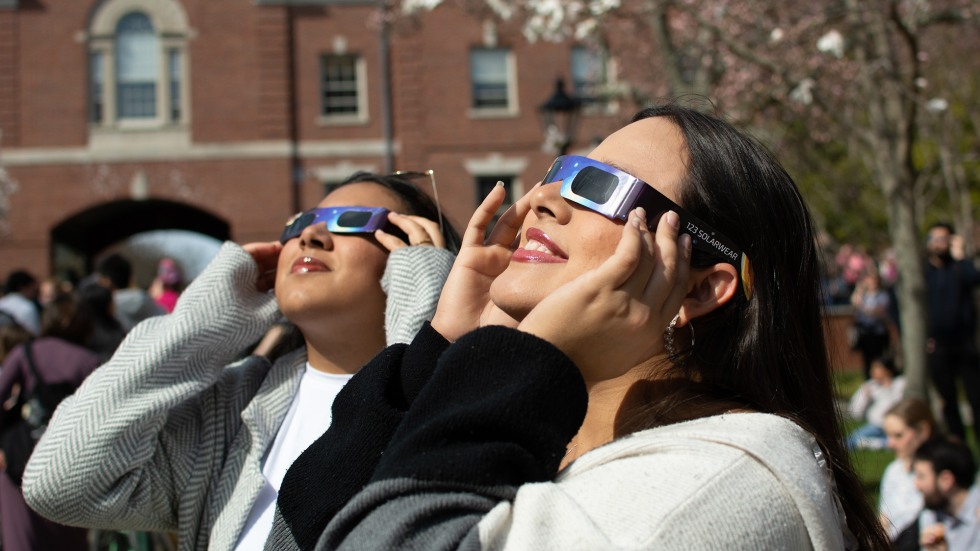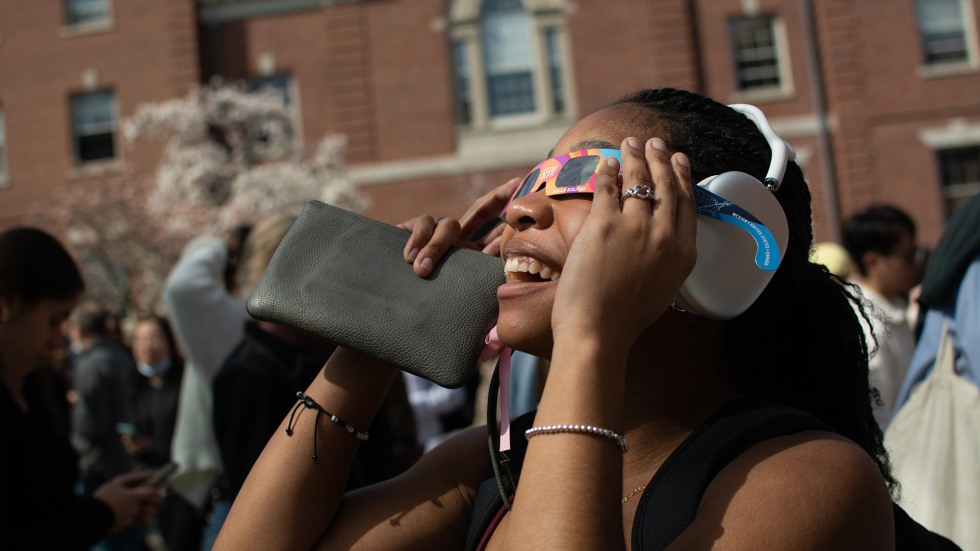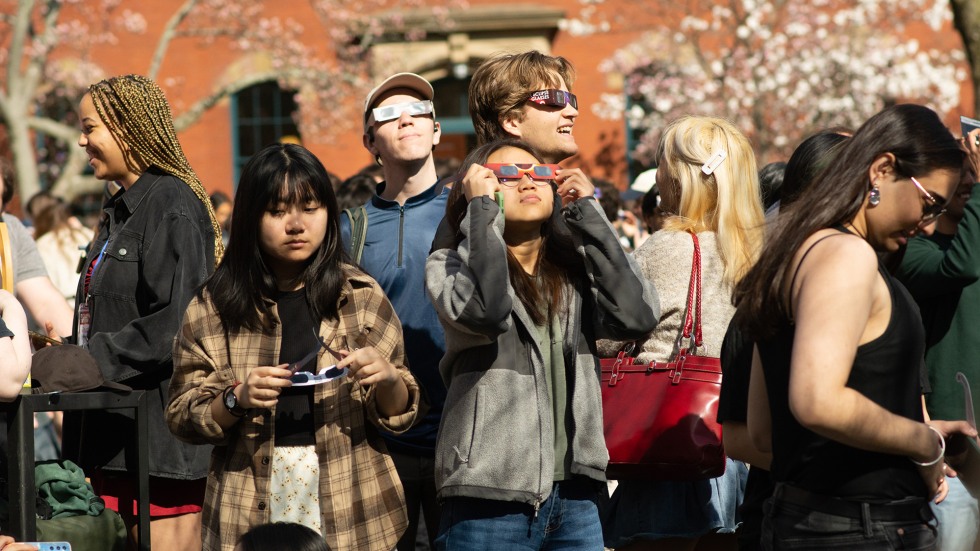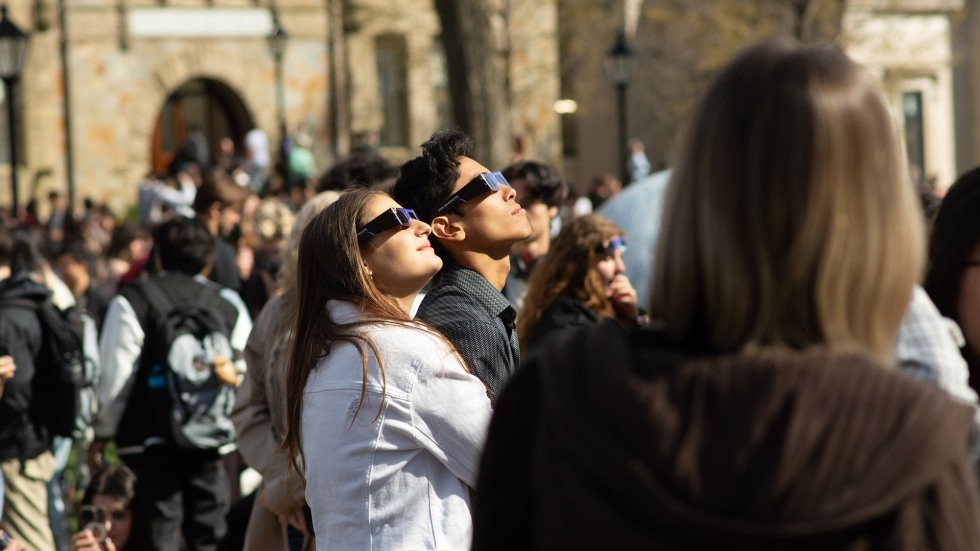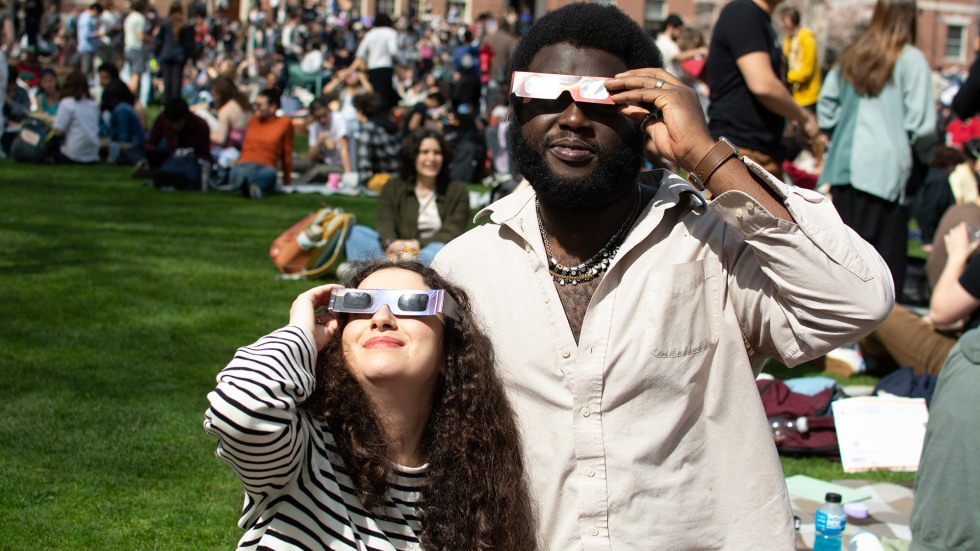PROVIDENCE, R.I. [Brown University] — On a mostly clear and sunny day, the only significant cloud in the sky turned out to be the moon, as hundreds gathered on Brown University’s College Green to view the partial solar eclipse. The eagerly anticipated celestial event filled a diverse crowd of students, faculty, staff and local community members with awe as they observed one of the natural wonders of the universe.
“I've never seen anything like that,” said first-year student Emily Lopes, who took a break from studying for a spring midterm to take in the unique spectacle. “I loved it.”
The April 8 viewing on the green featured scientists and students who stood ready to guide attendees through the experience, setting up specialized telescopes and handing out eclipse glasses to those who wanted a glimpse of the moon streaking across the sun. The event was organized by the NASA Rhode Island Space Grant Consortium, which has been housed at the University since 1991, along with Brown’s Department of Earth, Environmental and Planetary Sciences and LunaSCOPE project team.
“Looking out on the green with all the people out here, this is just a great opportunity to bring people together from all over the place,” said Ralph Milliken, a planetary scientist at Brown and program director for the consortium. “It’s getting people together in the same physical place at the same moment in time to connect and interact with one another over something that we can witness together that's all about being on our planet Earth and where we are in the solar system.”
